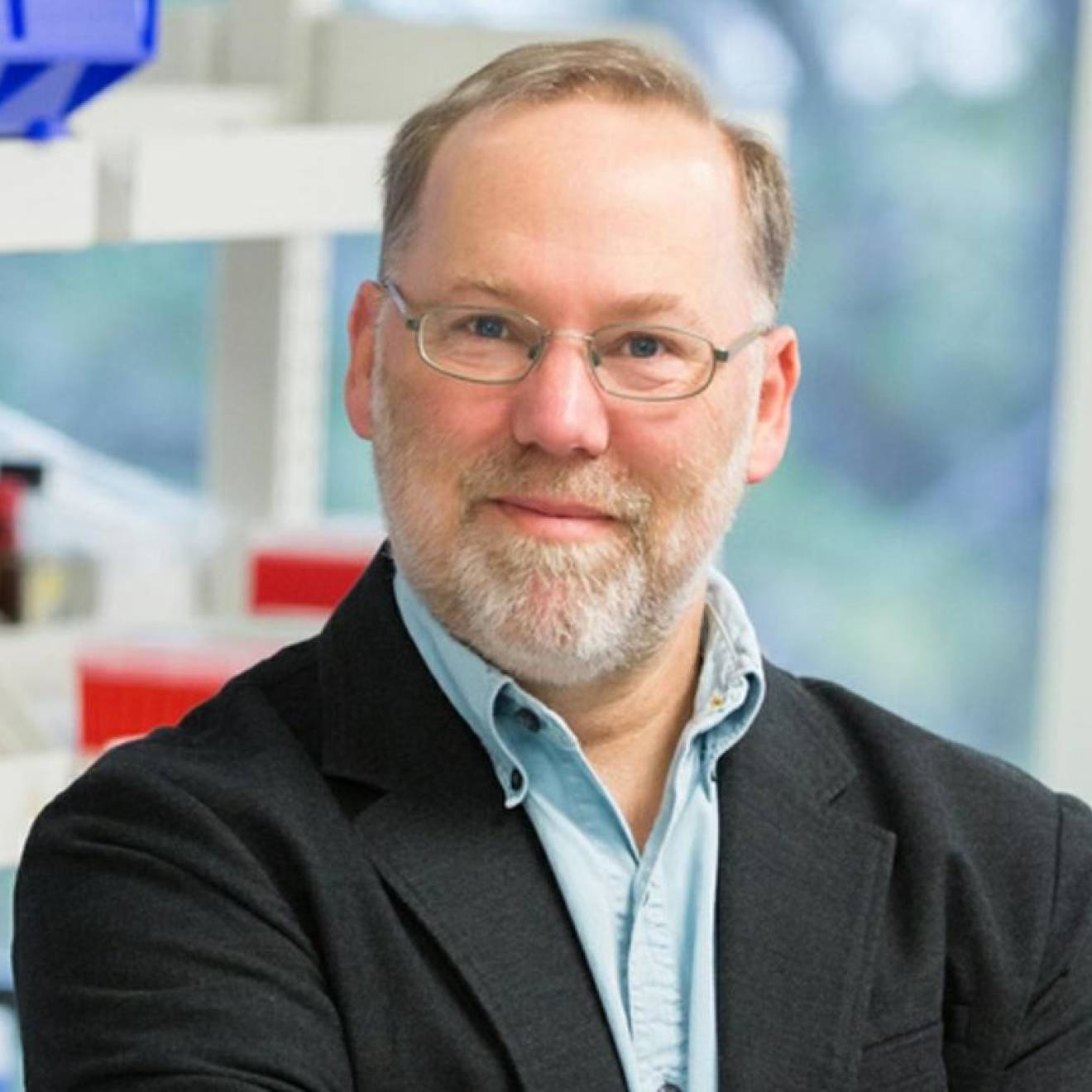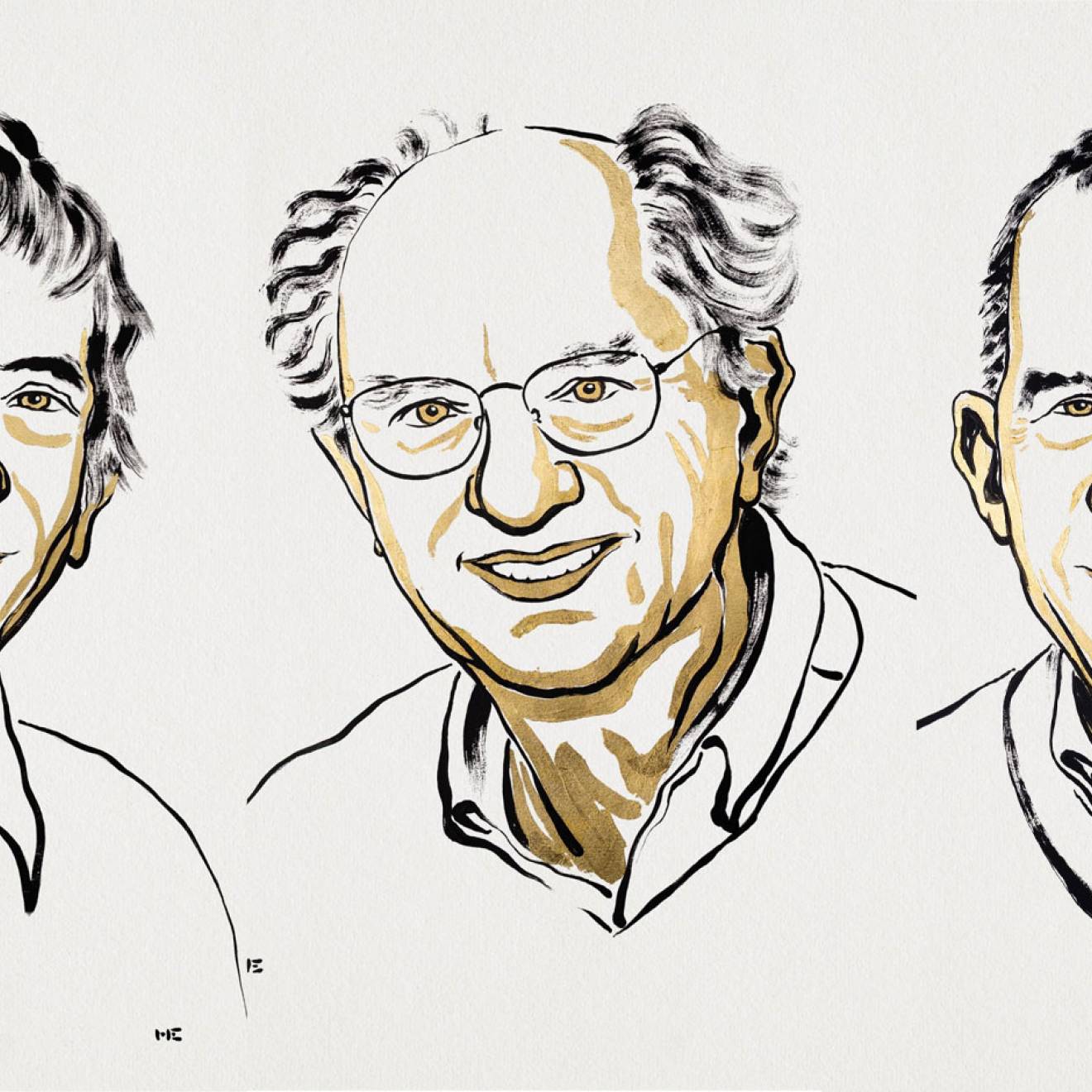Robert Sanders, UC Berkeley
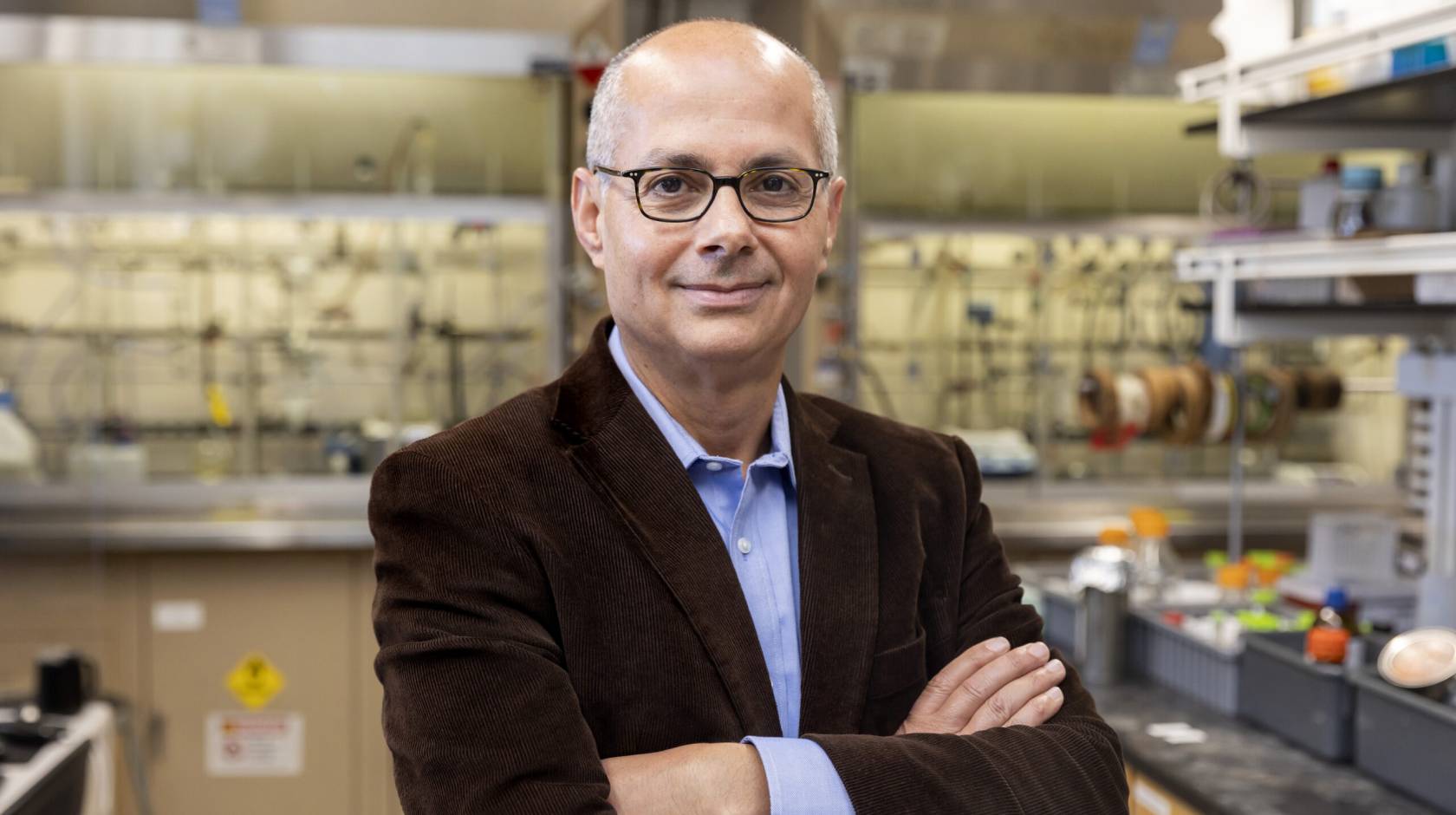
Omar Yaghi, a Jordanian-American chemist at the University of California, Berkeley, was awarded the 2025 Nobel Prize in chemistry today, sharing it with Richard Robson of the University of Melbourne, Australia, and Susumu Kitagawa of Kyoto University, Japan.
The scientists were cited for creating “molecular constructions with large spaces through which gases and other chemicals can flow. These constructions, metal-organic frameworks, can be used to harvest water from desert air, capture carbon dioxide, store toxic gases or catalyze chemical reactions.”
Yaghi is the 28th UC Berkeley faculty member to win a Nobel Prize and the fifth winner in the past five years. Yesterday, John Clarke shared the 2025 Nobel Prize in physics with two UC Santa Barbara faculty members, Michel H. Devoret and John M. Martinis. In 2021, David Card shared the Sveriges Riksbank Prize in Economic Sciences in Memory of Alfred Nobel, while in 2020, Jennifer Doudna shared the Nobel Prize in chemistry, and Reinhard Genzel shared the Nobel Prize in physics with UCLA professor Andrea Ghez. As of today, 74 UC faculty and staff have been awarded 75 Nobel Prizes.
Yaghi learned about his Nobel Prize win during a stopover on his way to a conference in Brussels, Belgium.
“As I landed, I saw there was nothing on my phone, and then I got a call,” he said. He ended up talking at length with a member of the Nobel committee, thanking them profusely, while surrounded by hurrying travelers.
“There is nothing like this, it’s an astonishment,” he said. Receiving the prize “is a feeling you don’t have often.”
His phone has not stopped ringing and buzzing since he landed. He is planning to answer all the well-wishers, while preparing to lead a scientific session tomorrow at the conference.
In the 1990s, Yaghi and his colleagues combined metals with organic molecules to build hybrid compounds that have a highly porous crystal structure, one that can readily absorb, store and release gases and vapors. He dubbed these compounds metal-organic frameworks, or MOFs, and proved that they are not only very stable structurally, but that they can be easily tuned, using different metals and different organic linkers to capture specific molecules and exclude others.
To date, more than 100,000 distinct MOF structures have been synthesized, each with different properties tuned to a specific application. Some, including versions created by Yaghi, can capture carbon dioxide from flue gases produced by power plants or industry. Others are used to pack methane into fuel tanks to power natural gas vehicles. Still others can store hydrogen and may someday equip hydrogen-fueled cars.
Within the last few years, Yaghi has created MOFs that absorb water directly from the air, even at the low humidity typical of desert environments, and has incorporated them into a water harvester. Several years ago, his lab spun off a company to market small, microwave-sized water harvesters that can capture up to 5 liters of water from the air per day in arid environments. And in 2020, he founded another company, Atoco, to deploy MOFs to fight climate change and expand access to drinking water.
He also pioneered two other large classes of porous materials: covalent organic frameworks, or COFs, which are the first 3D organic extended structures; and zeolitic imidazolate frameworks, or ZIFs, which vastly expand the capabilities of zeolite catalysts in industry. These, too, could be useful in the storage and separation of hydrogen, methane and carbon dioxide and in clean water production and delivery. Because COFs have the added ability to store charged ions, they can also work as supercapacitors with possible applications in batteries or the automotive industry.
Yaghi is the James and Neeltje Tretter Chair in the College of Chemistry and co-director of the Kavli Energy NanoSciences Institute at UC Berkeley. He also has appointments in the College of Computing, Data Science and Society and the Department of Materials Science and Engineering in the College of Engineering.
Reticular chemistry
Yaghi, 60, calls his field “reticular chemistry,” which he defines as “stitching molecular building blocks into crystalline, extended structures by strong bonds.”
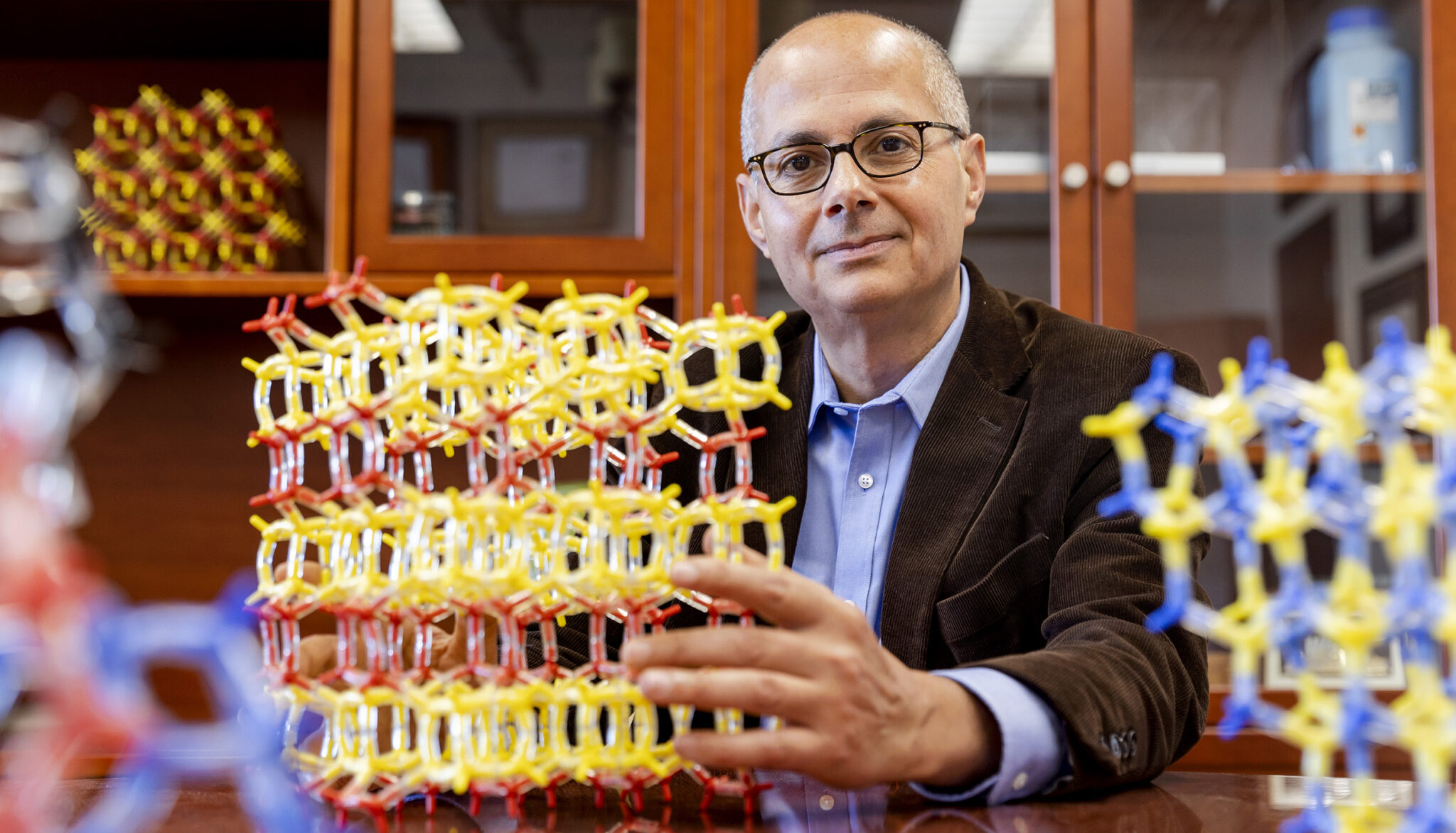
The idea came to him around the time he obtained his Ph.D. from the University of Illinois at Urbana-Champaign in 1990. There, he worked with chemist Walter Klemperer, who Yaghi said taught him not only “how to do rigorous science and the value of evidence in making your data analysis and conclusion,” but also “how to become a scientist that can break new ground in science, not somebody who follows other people’s discoveries.”
Yaghi had been working on the synthesis of complex molecules by building up larger molecules and then tearing them apart to get the desired structure, but he said the result was “unsatisfactory.” Just as polymers are strings of identical molecules, he envisioned two-dimensional or even 3D polymers, like crystals, constructed from the same molecular building blocks.
“There was no rationality in how you made these materials. There was no design, no intellectual rules or guidance for making them,” Yaghi said. ”So I was fixated, as an assistant professor at Arizona State University in Tempe, on building materials using a building block approach so that I could rationally put these things together.”
After unsuccessfully searching for totally organic crystalline structures, he tried hybrids of inorganic metals and organic molecules. Earlier metal-organic compounds — coordination polymers, as they were called — had been hard to use as porous structures because they were frail, but Yaghi and his students at Arizona State tried a different approach. They created an inorganic cluster of two metal atoms — a dimetal carboxylase — and linked it with a standard organic molecule that could be ordered from a supply house. After many trials, Yaghi’s team was able to create a stable, crystal-like structure with clusters of two metal atoms at the corners of a cube and the ligands between. He soon achieved success with clusters of four metal atoms and showed that the structures were robust, stable against degradation and highly porous.
“That basically was the spark that ignited the field,” he said. “After that, anybody could take an inorganic cluster, link it with an organic ligand and make a porous crystal. You can functionalize the pores, do hydrogen storage, CO2 capture, you can now capture water. And on top of all of that, you have thousands of inorganic building blocks that could be used and millions of organic units that could be used, and the combination would produce an infinite, truly infinite variety of structures that can not only be imagined, but can actually be made in the lab.”
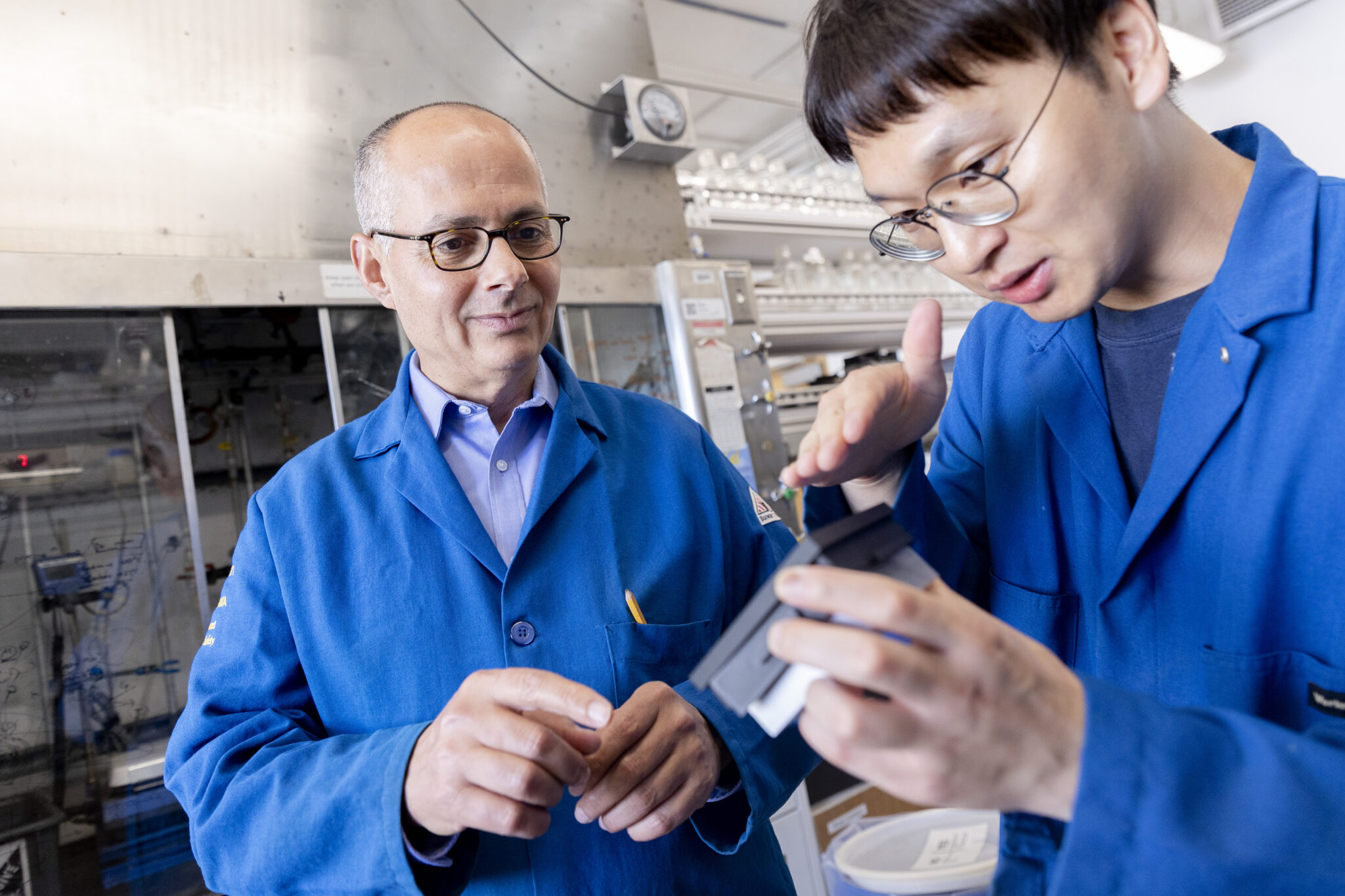
One of the most important advantages of MOFs is that they have an enormous surface area within their pores: as much as 10,000 square meters per gram of MOF, the equivalent of two football fields. The huge internal surface area allows a large volume of gas to stick, or adsorb. In addition, the metal and organic components of an MOF can be adjusted to select the type of gas adsorbed and how tightly it sticks.
“The metal clusters are at the corners of a scaffolding, like they put around a building,” Yaghi said. “At the intersection, people had put one metal ion. The new ones that we invented had clusters of metal ions that were large and allowed you to have flexibility on how they are linked. And above all else, they were not flimsy, they were not unsteady, like the ones made from single metal ions. The strong bonds between the metal clusters and charged organic linkers basically make the framework steady and robust.”
With MOFs, Yaghi essentially combined the fields of organic chemistry — the chemistry of carbon compounds — and inorganic chemistry, which deals with everything else, and extended those fields to 2D and 3D materials. These MOFs were highly customizable. By adjusting the two building blocks, the size and chemical environment of the pores inside the MOF crystals could be tailored for a given application.
By adding enzymes to the interior of the pores, MOFs can also be tooled to catalyze reactions, such as converting methane to methanol or breaking water into hydrogen and oxygen, providing clean energy.
Yaghi’s initial reports on MOFs were met with skepticism and sometimes derision, he said. But he had the support of a few chemists — key to a young assistant professor just starting his career — that kept him focused on the new field. He continued to work on MOFs after moving to the University of Michigan in 1999, to UCLA in 2007 and to UC Berkeley in 2012.
The field has continued to grow, Yaghi said. The number of articles on MOFs in scientific journals balloons each year and has yet to plateau. Dozens of companies in the U.S. are pursuing research on MOFs, with applications ranging from safer ways to store dangerous chemicals to ways to create better catalysts. He is among the top five most highly cited chemists worldwide.
In 2022, Yaghi was appointed the scientific director of a new research center at UC Berkeley, the Bakar Institute of Digital Materials for the Planet, which will employ artificial intelligence to develop cost-efficient, easily deployable versions of MOFs and COFs to help limit and address the impacts of climate change.
Yaghi is the founding director of the Berkeley Global Science Institute, which consists of a team of scientists and educators who work together to provide research opportunities for emerging scholars around the world. Through the establishment of centers of research excellence in Vietnam, Saudi Arabia, Japan, Jordan, South Korea, Argentina, Malaysia and Indonesia, the institute works to ensure that scientific research and innovation are performed without borders in a meaningful and impactful way.
“Professor Yaghi doesn’t end with groundbreaking science of both a basic and practical nature, but he combines this with the desire to mentor and outreach also on a global scale,” said Anne Baranger, interim dean of the College of Chemistry. “He’s established an entire institute in order to really bring up the best and the brightest and provide opportunities across the entire world.”
From Jordan to America
Yaghi was born in Amman, Jordan, in 1965 to parents who were refugees from Palestine. His father raised cattle and owned a butcher shop in Amman.
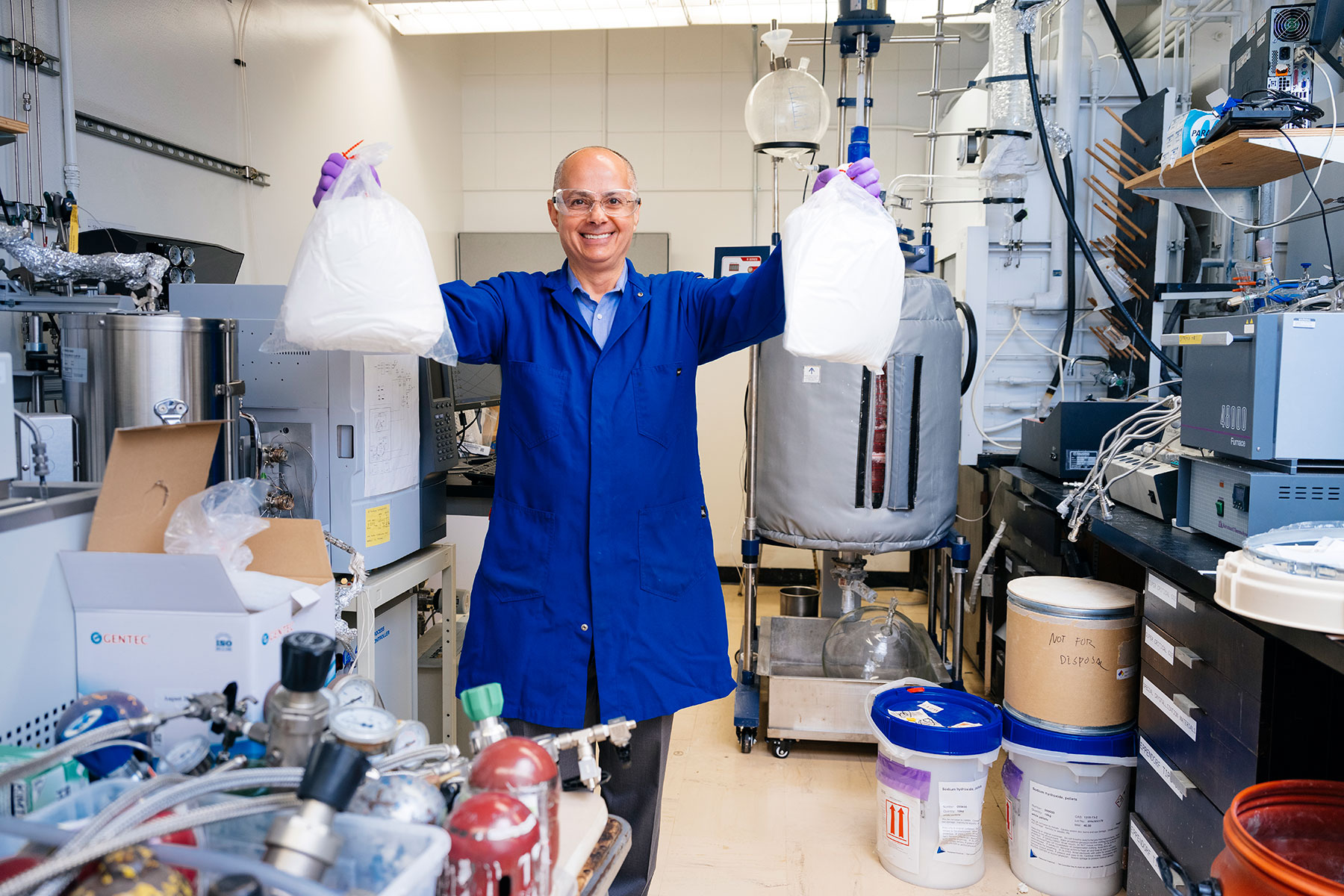
At the age of 15, he was told by his father that he must go to the U.S. to study and, within the year before he graduated from high school, he had obtained a visa and settled alone, in Troy, New York, to pursue his college education.
With a poor grasp of English, Yaghi took courses in English, math and science at Hudson Valley Community College in Troy before transferring to the State University of New York at Albany in 1983.
“I was in love with chemistry from the very beginning,” Yaghi said. “And when I moved to Albany, I immediately got into research. I was doing three different projects with three different professors at the same time: a physical organic project with one professor, a biophysical project with another and a theory project with a third professor. I really loved the lab. I disliked class, but I loved the lab.”
Supporting himself by bagging groceries and mopping floors, he graduated in 1985 with a B.S. in chemistry cum laude and pursued a Ph.D., which he completed in 1990 at the University of Illinois at Urbana-Champaign. Following a National Science Foundation postdoctoral fellowship at Harvard University, he joined the faculty at Arizona State University in 1992, then at the University of Michigan in 1999 and, after that, at UCLA in 2007.
In 2012, he joined the chemistry faculty at UC Berkeley and became director of the Molecular Foundry at Lawrence Berkeley National Laboratory, a position he held until 2013. He is the founding director of the Berkeley Global Science Institute and co-director of the Kavli Energy NanoScience Institute and of the California Research Alliance by BASF.
“Omar’s story is the quintessential American story, another unlocked American dream,” noted UC Berkeley Chancellor Rich Lyons at a press conference today honoring Yaghi. “Suffice it to say that leading up to the extraordinary recognition conferred by this Nobel Prize was boatloads of hard work, dedication, and creativity. Also, a willingness and ability to challenge the status quo. Also, an enormous amount of constructive collaboration and an unwavering zeal for discovery and exploration. These are the things Nobel prizes are made of. And these are the very attributes that define UC Berkeley and make this university one of society’s most valuable assets.”
“Congratulations to UC Berkeley chemist Omar Yaghi, who today was awarded the 2025 Nobel Prize in chemistry,” said UC President James B. Milliken in a statement. “His work creating molecular constructions has been used to capture carbon dioxide and turn desert air into drinkable water, offering sustainable environmental solutions. This award is a testament to Professor Yaghi’s determination and world-leading expertise. He joins 73 other UC faculty Nobelists who represent a long legacy of UC excellence, demonstrating once again the power of research to improve health, save lives, drive the innovation economy, and much more.”
Yaghi has received many honors for his research, including election in 2019 to the National Academy of Sciences. In 2025, he received the Von Hippel Award, the highest award of the Materials Research Society. In 2024, he received the Tang Prize in Sustainable Development and the Science for the Future Ernest Solvay Prize by Syensqo. In 2021, he received the VinFuture Prize for Outstanding Achievements in Emerging Fields, the AAAFM-Nakamura Prize International, the Ertl Lecture Award of the Fritz Haber Institute in Berlin and the Basolo Medal from Northwestern University, and he was named the Solvay Chair in Chemistry by Belgium.
He also received the 2020 August Wilhelm von Hofmann Denkmünze gold medal of the German Chemical Society for his contribution to reticular chemistry and the 2020 Royal Society of Chemistry Sustainable Water Award for his MOF-based water harvester.
Among his other awards are the 2019 Royal Swedish Academy of Sciences Gregori Aminoff Prize, the 2018 Wolf Prize in Chemistry, the 2018 Eni Energy Transition Award, the 2018 BBVA Frontiers of Knowledge Award in Basic Sciences, the 2015 King Faisal International Prize in Science, the 2009 American Chemical Society Award in the Chemistry of Materials and the 2007 Materials Research Society Medal.
Yaghi is also an elected member of the German National Academy of Sciences Leopoldina, the American Academy of Arts and Sciences, the Islamic World Academy of Sciences and the European Academy of Sciences. He is an elected honorary fellow of the Indian Academy of Sciences, an elected honorary member of the Turkish Academy of Sciences, an honorary member of the Jordanian National Academy of Science and Engineering, and a founding member of the Academy of Arab Scientists in Kuwait.
Yaghi, who is an American citizen, lives in Berkeley, California.
Related information
A World Renowned Chemist Wants to Suck Water, and Carbon, Out of the Air (September 2023 TIME Magazine)
ChatGPT accelerates chemistry discovery for climate response, study shows (August 2023)
Hand-held water harvester powered by sunlight could combat water scarcity (July 2023)
Water harvester makes it easy to quench your thirst in the desert (Aug. 27, 2019)
Device pulls water from dry air, powered only by the sun (April 2017)
2012 LBNL conversation with Omar Yaghi (UCTV video)
